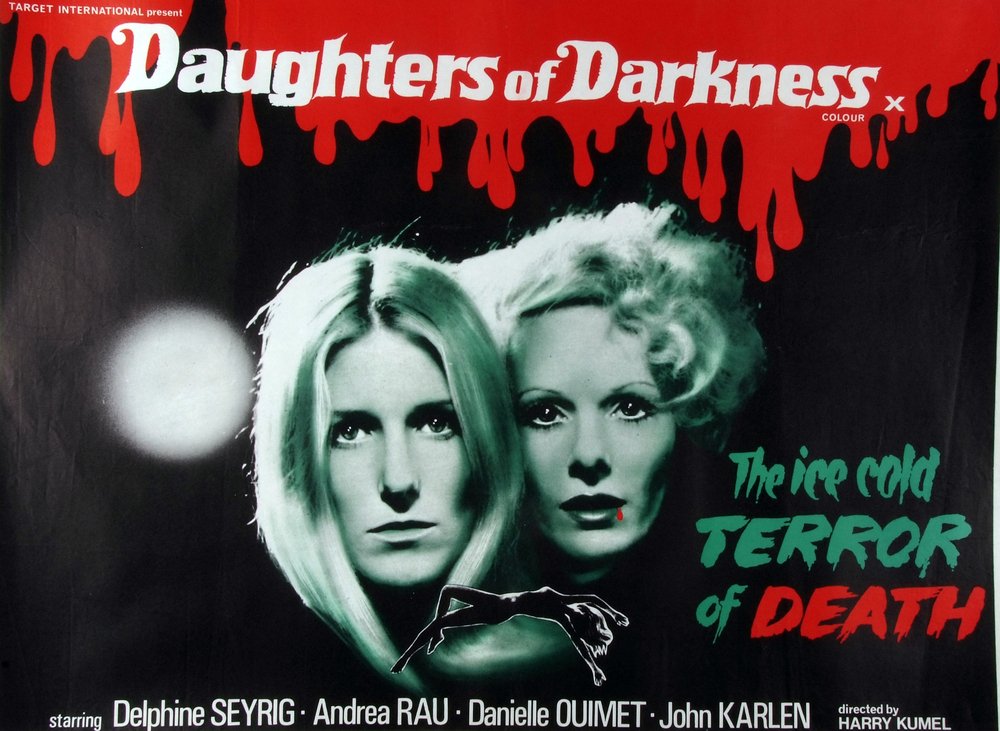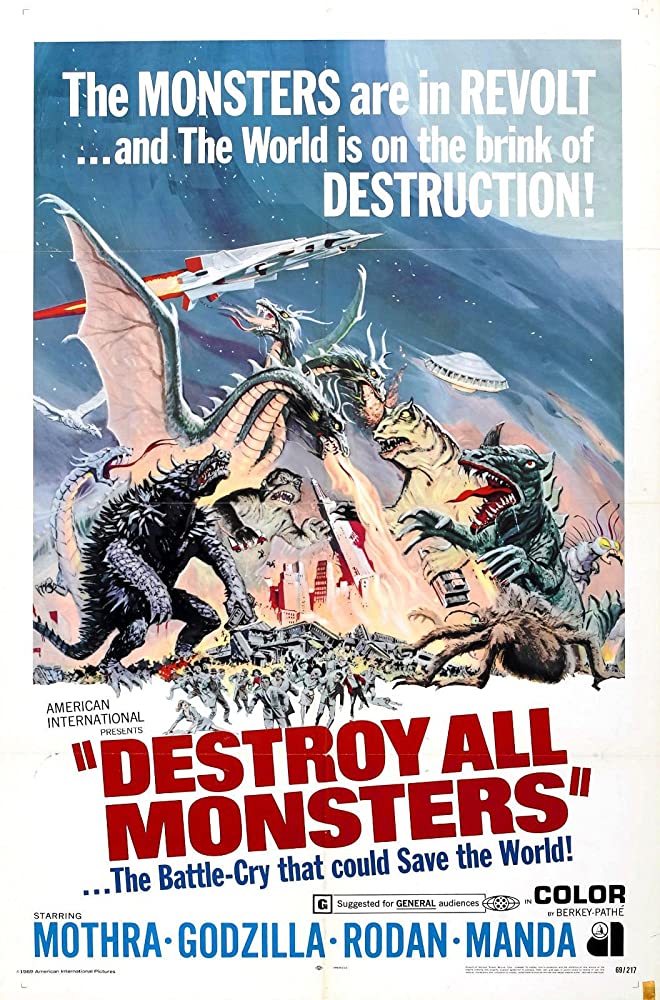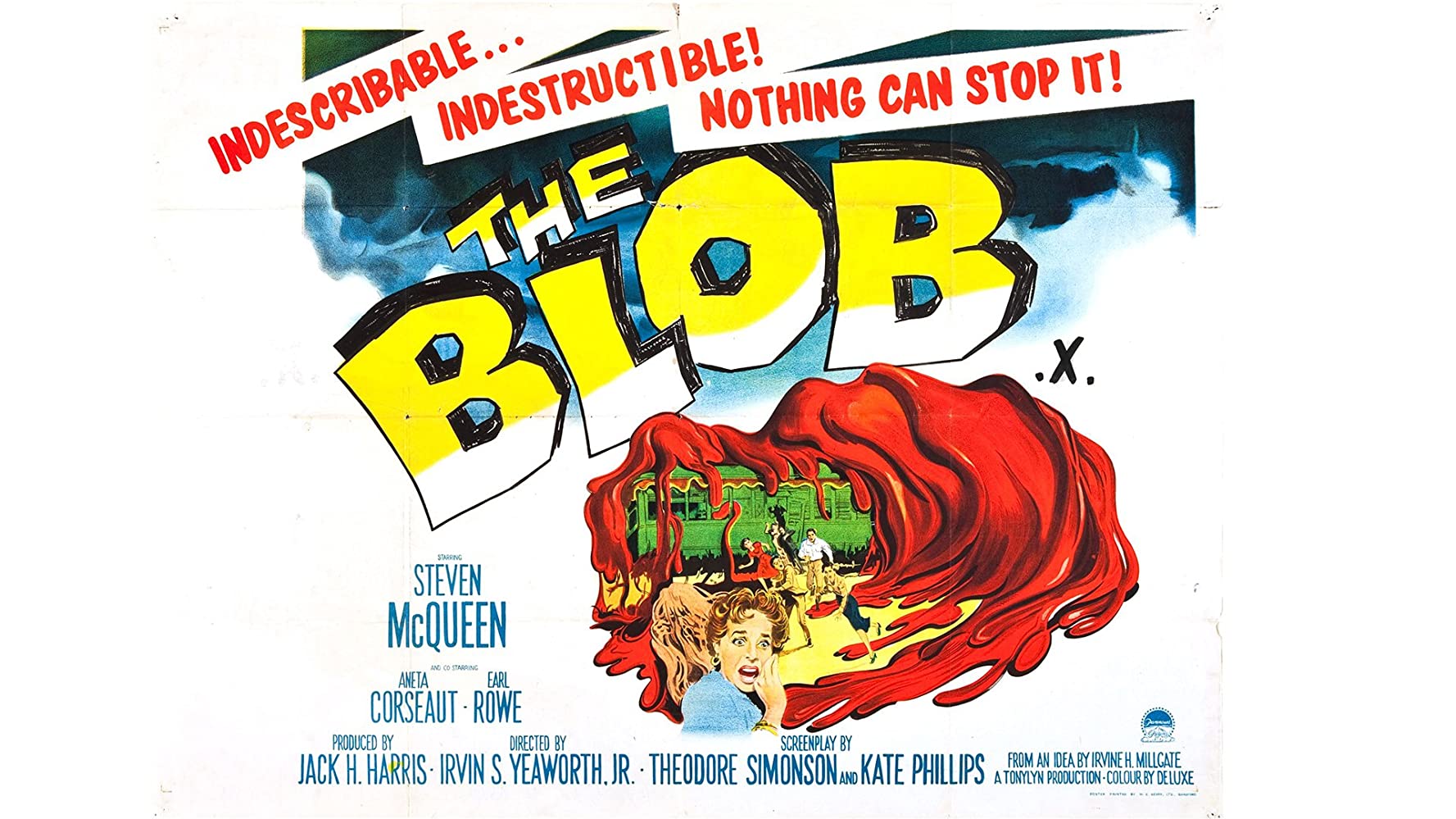Night of the Living Dead
Back in 2013, I wrote a piece on Tumblr that “dissected”, so to speak, what I considered a deeply transphobic joke Rob Zombie made during his (excellent) performance at Mayhem Festival. I’m not only not going to re-publish that piece, I’m not even going to link to it because I’m so ashamed of the narrow-minded priggishness and oversensitivity the piece displays; I lunged at the supposed infraction like a politically correct zombie. I had only come out as trans the year before, and at the time I was much more vulnerable to my own internalized transphobia, which is why the throwaway moment shook me so much. Besides which, I think in retrospect I lashed out as a way to feel better about my own internalized self-hate. There’s a strong case to be made that “call-out culture” is really a way of making the canceller feel better about themselves as opposed to effecting change in any meaningful way.
But this is not a post decrying “cancel culture”. Such articles are far too numerous, and mostly amount to pointless self-serving bullshit about how cancel culture is a danger to society, or whatever, because white people can’t say the n-word. That’s not what this is about.
A couple of days after my Rob Zombie post, Autostraddle published my first ever external article, titled “Pity is Not the Same as Respect: A Critique of ‘Dallas Buyers Club'”. In stark contrast to the previous article, I’m actually pretty proud of this analysis of Dallas Buyers Club. Here’s an excerpt:
Rayon’s character and narrative validate subtle prejudices against gender and sexual minorities by presenting a cisgender superiority that only looks favorably on trans people as it looks down on them […] Rayon suffers and dies to affirm hierarchies that place people with traditional gender and sexuality at the top.
Now, in general, I still think that. I maintain that Dallas Buyers Club is a bad movie for a lot of reasons, including for the reasons I stated above. And I think the distinction between the two articles really gets at what it means to do some genuine calling out and when such actions become unhelpful acts of self-aggrandizement. One reason is the size disparity between pointing out the systemic transphobia prevalent throughout a future Oscar-winning film versus a single joke made at a concert buried beneath a whole other bunch of crowd-work. At a certain point we have to acknowledge that some microaggressions need not be publicly litigated.
But that changes when you’re talking about a movie, especially a semi-popular work of cinematic fiction. Movies, like it or not, are a very insidious way of conveying ideas, often in ways that people are not trained to spot (media literacy generally being not taught enough in the U.S.). Film is a potent communicator of ideas, and I firmly believe that instead of attempting to stop people from seeing the movie (as has been a strategy of queer groups in the past with films like Cruising and Fatal Attraction), I did the right thing by meeting speech with more speech. More conversation (as opposed to less) can only be healthy.
Daughters of Darkness
It is worth, at this point, visiting Mark Fisher’s “Exiting the Vampire Castle” for a moment, because Fisher articulates a lot of what I’m trying to say here. First, Fisher defines the Vampires’ Castle (all italics in original):
The Vampires’ Castle specialises in propagating guilt. It is driven by a priest’s desire to excommunicate and condemn, an academic-pedant’s desire to be the first one to be seen to spot a mistake, and a hipster’s desire to be one of the in-crowd. The danger in attacking the Vampires’ Castle is that it can look as if — and it will do everything it can to reinforce this thought — that one is also attacking the struggles against racism, sexism, heterosexism. But, far from being the only legitimate expression of such struggles, the Vampires’ Castle is best understood as a bourgeois-liberal perversion and appropriation of the energy of these movements. The Vampies’ Castle was born the moment when the struggle not to be defined by identitarian categories became the quest to have ‘identities’ recognised by a bourgeois big Other. [2]
I’ve been there; I was holed up in the Vampires’ Castle for a long time before I started to learn better (I guess that makes me your archetypal lesbian vampire, like Delphine Seyrig). When I came across this piece by Fisher, it articulated so much of what had been making me increasingly uncomfortable in recent years, namely, the sense that I was embroiled in a game whose goal was not to actually make change but was, well, a game, and one whose sole objective was the accumulation of points.

One of my favorite writers is Michael Koresky, who writes the Queer & Now & Then column for Film Comment. In the inaugural column, Koresky writes about Bob Fosse’s All That Jazz, concluding that “The queerest things about Fosse’s film is that its queerness might be the least queer thing of all.” [3] I love Fosse’s film, but I particularly love Koresky’s analysis of the film, to say nothing of that gorgeously labyrinthine final sentence, and the way it destabilizes identity: of film, of people, of ideas. That destabilization is, I would argue, anathema to the Vampires’ Castle: as Fisher rightly says, “No-one is essentially anything.”
This is not to say identity can’t be important, in ways both positive and negative. No matter how often we talk about sex and gender fluidity, there will be people who violently insist on the gender binary. On the flip side, I’m very much one of those people who insist that gender is neither a dour reality or an enemy to be vanquished, but rather something fun to be toyed and played with; in Gender Outlaw, Kate Bornstein likens gender play to S&M, a way of mocking the very systems of power being simulated. Both BDSM (power play) and gender play suck the air out of the kind of moralistic high-mindedness that so defines Fisher’s Vampires’ Castle.
The Invisible Man
The seminal article on the lesbian vampire is Bonnie Zimmerman’s 1981 article “Daughters of Darkness”, which takes its title from the 1971 Belgian film of the same name. “Daughters of Darkness” is a contemporary of The Celluloid Closet, a 1981 book whose influence on film criticism cannot be overstated. Russo’s treatise on queer cinema, like Zimmerman’s piece on the lesbian vampire, emphasizes a disparity between negative and positive representation. This standpoint was arguably necessary at the time, and while both works remain rewarding and essential reads for any students of film, they are also distinctly dated, products of an era in which it was a radical act to list minor incidents of homophobia in cinema. That The Celluloid Closet is out of print is both something of a travesty and not entirely a surprise.
The Celluloid Closet is perhaps the key text in propagating what Morgan M. Page calls “the lie that visibility and ‘awareness’ will save us” [7]. As Russo writes in the introduction, “We have cooperated a very long time in the maintenance of our own invisibility. And now the party is over.” [8] The party, or rather the era of the Invisible Man, is indeed over; the cinematic, cultural, and political climate in the U.S. that necessitated The Celluloid Closet has passed. We need something different than visibility.
Dr. Jekyll & Mr. Hyde
If Russo’s book was what was needed at the time, Screening the Sexes is perhaps the book we need now. Parker Tyler’s manifesto on queer images — published 9 years before Closet, the two books have the exact same subtitle — deserves a revisit now more than ever. Tyler — nearly 50 years ago, remember — wrote:
I must insist on one point: I have not chosen to associate homosexuality so closely with heterosexuality (which may be a disguise of homosexuality) in order to make one as “respectable” as the other. I violently repudiate what is commonly known as respectability, which itself is an antiquated strategy of the dishonest bourgeois establishment.” [9]
Tyler was, in a sense, deeply ahead of his time, or more accurately time has somewhat cyclically caught up with him again. Tyler’s book only comes three years after what many consider the watershed of the modern queer movement, the Stonewall Uprising of 1969, but as Koresky points out, that pre- and post-Stonewall cinema is a “false binary” [10] (this is true of any attempt to create a clear dividing line in queer history using Stonewall or any other single event). In 1972, revolutionary pre-Stonewall queer films from across global cinema — like Persona (Sweden, 1966), Flaming Creatures (United States, 1963), Funeral Parade of Roses (Japan, 1969) and Teorema (Italy, 1968) — were fresh in the collective memory.
Frankenstein
Russo wrote a new final chapter for the revised edition of The Celluloid Closet in 1987, in which he comments on what was then an emergent queer cinema: films like Desert Hearts, My Beautiful Laundrette, and Parting Glances. The New Queer Cinema was just beginning. Russo sadly passed away in 1990.
The term New Queer Cinema was coined by film critic B. Ruby Rich in 1992. Rich became a key chronicler of a new kind of queer cinema, one which defied both stereotypes and the same respectability Parker Tyler refused. While some queers protested films like The Silence of the Lambs and Fatal Attraction, queer filmmakers like Gregg Araki and Tom Kalin made The Living End and Swoon, respectively. Rich writes that
Swoon takes on the whole enterprise of “positive images” for queers, definitely rejecting any such project and turning the system on its head. I doubt that anyone who damned Jonathan Demme’s The Silence of the Lambs for toxic homophobia will swallow Swoon easily, but hopefully the film will force a rethinking of such positions. Claim the heroes, claim the villains, and don’t mistake any of it for realness. [11]
Susan Stryker famously “claimed the villain” when comparing the trans experience to that of Frankenstein’s monster in “My Words to Victor Frankenstein Above the Village of Chamounix”, a foundational text of trans studies. Sandy Stone did something similar when, responding to Janice Raymond’s The Transsexual Empire , she called her piece “The Empire Strikes Back”. There’s emotional and political power in identifying with the monster. Or monsters, as the case may be; there are plenty of kaiju to go around.

Meanwhile, filmmaker Cecilia Barriga’s 1991 video “Meeting of Two Queens” recuts queer subtext into text by taking scenes featuring Marlene Dietrich and Greta Garbo — a pair of queer cinema icons, when read between the lines by discerning viewers — and splicing them together. The result is a Frankenstein’s monster of a film that one can imagine being animated by a bolt of lightning. The already Frankenstein-like cinematic art form becomes more so when it is queered. The secret of Barriga’s piece is that it only concretizes the kind of viewing practices that queer people have practiced since cinema immemorial: practices based on mixture, assemblage and clandestine subtext. If cinema is always already queer, it is because queers have always been watching.
The Blob
It is precisely because queers have always been watching that many gay/trans period pieces really irks me. Films like The Danish Girl and Milk are not only calculated to be as inoffensive as possible, they often erase the history of pre-Stonewall or pre-Obergefell or pre-Tipping Point [12] or pre-whatever cinema. Going back to Koresky, discussing pre-Stonewall cinema (although he might well have been discussing pre-Tipping Point cinema):
These are films that were, out of circumstance, caught up less in the political fight for freedom than in the electric impulses that careen through our brains. These are films that we now tacitly, implicitly refute, no matter their erstwhile radicalism. We tend to love classic movies, books, and songs—unless they seem hopelessly outmoded, the irredeemable products of an earlier era not yet caught up with our imagined progressive values. [13]
Queer viewers can be guilty of losing sight of the old ways of viewing, the ways that led to the radically intertextual playfulness of “Meeting of Two Queens” or “My Words to Victor Frankenstein”. Ryan Murphy has done just that with his Hollywood miniseries, overwriting the history of queer subtext with one of text. In doing so, something feels lost more than anything feels gained for queer media.
I’m going to borrow, as I often do, from Robert McRuer, who writes, “a system of compulsory able-bodiedness repeatedly demands that people with disabilities embody for others an affirmative answer to the question, ‘Yes, but in the end, wouldn’t you rather be more like me?'” [14]. The same, of course, is true for other non-normative identities, including queerness; this is the essence of assimilationism, and it’s precisely what you get when you insist on so-called positive representation. Positivity only counts in the eyes of people with power (that’s how positivity comes to be defined in the first place: as that which pleases the powerful, or rather that which least threatens their power).
It’s that assimilationist energy I see in Hollywood, as I’ve usually seen it throughout Murphy’s career. To be clear, I am in no way trying to suggest that Murphy is somehow not queer enough because Glee was not The Blood of a Poet. But I will quote Slate‘s Sam Adams here: “when you rewrite history, you’re never starting with a blank page.” [15] Murphy’s self-congratulatory alterations of the historical record — like the rest of his body of work — seem to presuppose that queer people didn’t exist before Ryan Murphy started making television.

Murphy’s epidemic of positive representation insists on absorbing queers into mainstream models of acceptability. Murphy’s work is a perpetual yes in response to heterosexual question, “Yes, but in the end, wouldn’t you rather be more like me?” No wonder his work has been a hit: it’s a hyper-politically-correct paean to neoliberalism: just expose enough queer people to the light — in acceptably sanitized fashion, of course — and homophobia will disappear.
Looking back, I’ve often criticized Ryan Murphy for the wrong reasons, for imagined infractions and cinematic microaggressions against the fragile collective ego of the Vampires’ Castle, just as I managed to somehow write an entire article out of a joke Rob Zombie made in 2013. Many people, myself included, have become bastardized versions of Elliot Gould’s Marlowe in the finale of The Long Goodbye: “nobody cares but me”, before immediately gunning down his former friend.
The Thing
I’d rather suggest that we stop trying to think of ourselves as brooding detectives bravely caring enough to root out and punish bad behavior on an individualistic level (I haven’t particularly been cataloguing examples of such behavior for two reasons: both because I think in general I myself am a fine example and because to do so would arguably play into this same point-scoring, public shaming dynamic). I am not saying that there should be no public accountability, in fact far from it, but by confining our criticism to individual behavior, be it of a person or a fictional character, we lose sight of what’s really important: the inequalities that structure the daily lives of people on whose behalf we supposedly call things out.
In looking at the Vampires’ Castle specifically from a standpoint of film criticism, I turn to Robin Wood’s “Responsibilities of a Gay Film Critic”, in which Wood says pointedly:
The common aim of both [Gay Liberation and Women’s Liberation] movements must be, it seems to me, to attack and undermine the dominant ideological norms on all levels. This offers the gay critic a brief that is enormously more open and comprehensive than the examination of the ways in which homosexuals have been represented on the screen … The attack, for instance, could—indeed, should—be directed at the economic structures of capitalism that support the norms [16]
All too often, criticisms amount to one degree or another of being offended while sidestepping critique of the structures that enable harm, including, yes, through things like microaggressions. As Katherine Cross puts it, “No, you do not have a right to not be offended. Concomitantly, we need to stop using ‘offended’ as a synonym for ‘structural harm’ or ‘oppression’ in everyday political discourse.” Later in the piece, Cross follows up: “It is the deeds that flow from words which concern us, and which cannot be contained by the concept of offensiveness.” [17] This is not a piece dismissing the idea that words and images can cause harm, but rather the way in which we preoccupy ourselves with both individualistic expressions of “offensiveness” and the individual offender themselves.
As such, it is important to be fluid rather than rigid in our criticisms, and recognize that the situation is rarely so simple as to be summed up so easily and punished so thoroughly. The shapeshifter critic attends to works of art as shapeshifting entities in their own right. This means, to borrow from Fisher, that nothing is essentially anything, but rather that art inhabits a complex, irreducible set of meanings. Criticism is a necessary check on power, including media power, but all too often we weaponize “offense” in order to condemn, to the detriment of good-faith attempts to criticize in order to actually produce change for the better.
Sources
- Mark Fisher, “Exiting the Vampire Castle”, Open Democracy: https://www.opendemocracy.net/en/opendemocracyuk/exiting-vampire-castle/
- ibid.
- Michael Koresky, “Queer & Now & Then: Introduction/1979”, Film Comment: https://www.filmcomment.com/blog/queer-now-introduction-1979/
- Mark Fisher, “Exiting the Vampire Castle”, Open Democracy: https://www.opendemocracy.net/en/opendemocracyuk/exiting-vampire-castle/
- Kate Bornstein, Gender Outlaw: On Men, Women, and the Rest of Us
- Mark Fisher, “Exiting the Vampire Castle”, Open Democracy: https://www.opendemocracy.net/en/opendemocracyuk/exiting-vampire-castle/
- Morgan M. Page, “One from the Vaults: Gossip, Access, and Trans History-Telling”, pp. 135 – 146 in Trap Door: Trans Cultural Production and the Politics of Visibility
- Vito Russo, The Celluloid Closet: Homosexuality in the Movies
- Parker Tyler, Screening the Sexes: Homosexuality in the Movies
- Michael Koresky, “Out of the Past”, Film Comment: https://www.filmcomment.com/article/out-of-the-past/
- B. Ruby Rich, New Queer Cinema: The Director’s Cut
- Katy Steinmetz declared 2014 a Transgender Tipping Point via a Time cover story
- Michael Koresky, “Out of the Past”, Film Comment: https://www.filmcomment.com/article/out-of-the-past/
- Robert McRuer, Crip Theory: Cultural Signs of Queerness and Disability
- Sam Adams, “Ryan Murphy’s Hollywood is an Insult to the Real-Life Trailblazers it Overwrites”, Slate: https://slate.com/culture/2020/05/hollywood-netflix-ryan-murphy-series-rewrites-history.html
- Robin Wood, “Responsibilities of a Gay Film Critic”, in Personal Views: Explorations in Film
- Katherine Cross, “‘I Find This Offensive’: How ‘Offense’ Discourse Traps Us Into Inaction”, Feministing: http://feministing.com/2015/02/12/i-find-this-offensive-how-offense-discourse-traps-us-into-inaction/
- Media Literacy Means Knowing Matt Walsh is a Mass Murderer - November 22, 2022
- Quarry and Archive - October 13, 2022
- Thoughts on ‘The People’s Joker’ - September 19, 2022
